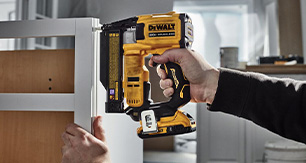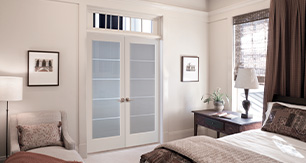With the continued rise of green and sustainable construction, builders across the country are addressing moisture and air management through careful product specification and smart building processes – even down to the selection of house wrap.

A high-performing house wrap with optimal breathability can help improve a home’s durability, indoor air quality and even help reduce utility costs. Therefore, it’s more important than ever that builders choose the right house wrap for the job.
When it comes to choosing a house wrap, there are a few key factors to consider:
Water Resistance
The basic function of house wraps is to serve as a barrier against moisture. The best way to determine a house wrap’s water resistance is by reviewing water ponding and leak test results. If you’re trying to decide between two house wraps, always choose the one that is the most water resistant. Tyvek house wraps have more than 17 times the water holdout than their competitors when tested in accordance with the Industry Hydrostatic Tests.
In addition to reviewing water-resistance results, learn as much as you can about the house wrap’s ability to shed water. You don’t want to invest in a house wrap that is going to trap water in puddles that will turn into a breeding ground for mould, mosquitoes and mildew. When selecting a building wrap, look for one that hits the sweet spot of 10 to 20 perms to achieve the desired balance of moisture protection and drying capacity.
UV Resistance
When the topic of house wraps comes up, UV resistance is rarely mentioned. The reason is that most people know that the house wrap will be under the exterior siding, so it shouldn’t encounter UV rays. It’s sound reasoning, but what about during construction? It’s not unusual for a house wrap to serve as the only protection a building has for several weeks. During this time, it’s exposed to the full force of the sun and can deteriorate rapidly. To ensure it stays in perfect condition despite exposure to sunlight, Tyvek designs house wraps to withstand up to four months (120 days) of direct UV exposure.
Overall Durability
With the constant demands of construction, accidents can happen on any jobsite. This is why Tyvek designs house wraps with strong, tear-resistance weaves. Not only are the wraps resistant to tears from construction, but they also hold strong during heavy, straight-line windstorms. When you use Home Wraps effectively to seal the building envelope, it reduces the amount of energy required for heating and cooling.
Ease of Installation
The FlexWrap EZ is a unique, flexible adhesive tape that creates an air- and water-tight seal when installed around penetrants of all different shapes and sizes. It’s lightweight, easy to handle, elastic and can wrap around corners and interface at joints and architectural elements with ease.
It’s a simple, easily installed solution to reduce the small air leaks and improve the energy efficiency and durability in residential and commercial buildings. This allows for significant time and cost savings on site. Give your clients the protection they need with a high-performing house wrap that ensures the elements are kept at bay where they belong.
For more information on house wraps, see the experts at your local Co-op Home Centre today.








